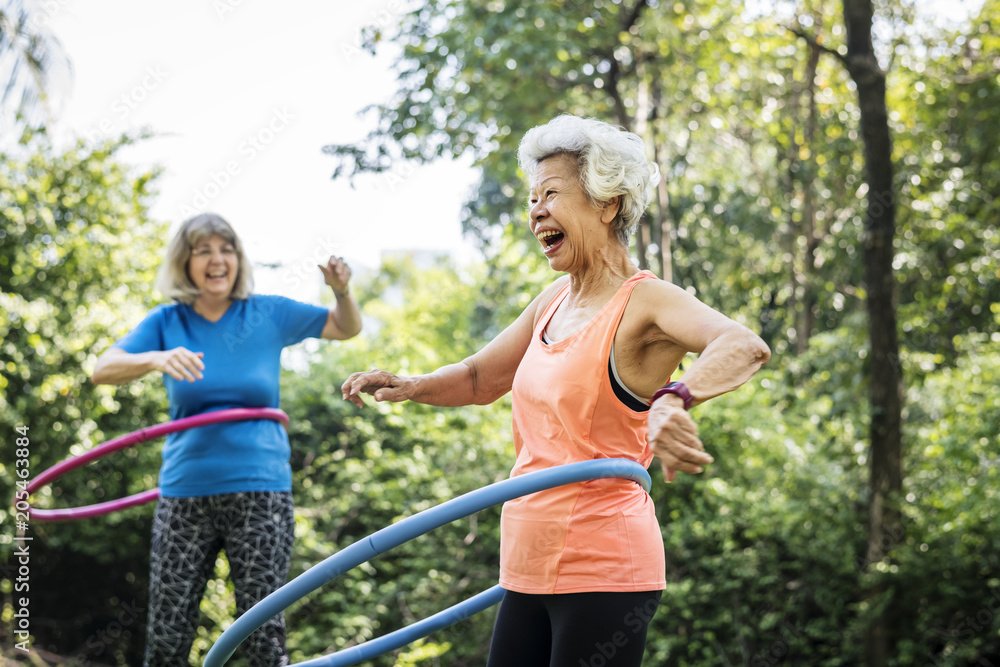Inflammaging Series: PART IV - Movement Strategies to Reduce Inflammaging
Reduce inflammaging
In Part IV of my Inflammaging Series, I cover movement strategeis to reduce Inflammaging. Choices you make today to increase your daily movement will help you decrease inflammation and increase longevity.
Having an active lifestyle will be of benefit to you, regardless of how old you are. Recent studies show that healthy lifestyles can slow down or even reverse the process of inflammaging.[4]
You don’t need to start sleeping like a baby, eating like an Olympic athlete, or training for a marathon to address inflammaging. Taking small steps, starting today, will help get you on the path to a healthy and physically strong future—no matter your age.
Here are my top recommendations. Pick 1-2 a month and start making small changes that will last a lifetime.
Exercise is anti-inflammatory
Research shows that exercise has significant anti-inflammatory effects. A recent review of 23 studies published in the journal Experimental Gerontology concluded that exercise was linked to lower levels of inflammation.[17] Another study in the Journal of Applied Physiology looked at how well exercise can delay the onset of inflammaging.[8] The researchers found that older men who maintained an aerobic exercise regimen had lower levels of inflammation and better chances of delaying, or even preventing, inflammaging altogether.
Beyond being anti-inflammatory, physical activity has many additional health benefits. For example, it helps to reduce risk of high blood pressure (linked to heart disease and stroke), diabetes, and depression.[18] Exercise also helps to reduce falls and maintain independence, and studies suggest it may help benefit the brain by delaying or slowing the onset of cognitive decline and dementia as we age.[18]
Exercise strategies you can start today
There are four kinds of exercise recommended for adults to improve physical function and prevent (and even treat) frailty:[19]
Resistance (strength) training
Aerobic (endurance) activity
Balance
Flexibility
If you’re new to exercise (or getting back into the habit), start from where you are now (making sure you’re cleared by your doctor) and go for small improvements over time.
There are a few things to keep in mind when starting or increasing your physical activity. First, listen to your body. Be sure to slow down or stop if you experience pain, dizziness, or other concerns.[20] Also, be sure to drink fluids before you start feeling thirsty, and follow instructions for proper form when learning new moves or using equipment.[20]
1 - Resistance (strength) training
Resistance, or strength, training can improve your muscle strength, walking speed, and physical performance.[9,19] Resistance exercises are particularly effective to slow down the process of sarcopenia by keeping your muscles strong.[6]
“Though all types of physical activity offer benefits, resistance training is presently the most effective intervention to elicit improvements in muscle mass, strength, and function in older adults.” ~ Strasser et al. 2021[7]
Resistance exercises are those where you are pushing or pulling, often against gravity. These are commonly shown as lifting weights or stretching a resistance band, but can also be done without any equipment—for example, doing push-ups, sit-ups, lunges, or squats that use nothing but your own body weight to resist gravity.[20]
Getting started and looking for inspiration? Follow this link for a simple No Equipment: Home Based Resistance Training routine.
2 - Aerobic (endurance) activity
Aerobic or endurance activities are ones that increase your heart rate and improve the health of your heart and lungs.[20] For that reason, they’re also known as “cardio” exercises. Brisk walking, yard work, dancing, swimming, and cycling all count as cardio. (It’s not just running!)[20]
One way to get more aerobic activity into your day is to start taking daily walks. Even just 10, 20, or 30 minutes can make a difference. If you don’t go for regular walks and there is no physical reason why you cannot, then go ahead and start enjoying them. If you already walk, you can increase them by 10 or more minutes, or try going farther or finishing your regular route at a faster pace. To get the most out of your walking routine, set your pace to walk as though you are late. If you’re up to it, try increasing the pace even more by jogging or running. You can also use these daily walks, jogs, or runs as opportunities to get some fresh air. If you want some alone time to clear your head, walk alone, otherwise invite someone to join you and enjoy their company while deepening your social connections.
There are so many options when it comes to aerobic exercise, that there’s bound to be one that’s just right for you. For example, you could join a fitness centre or group program in your community. There may be opportunities right in your neighbourhood to join a class or sports team. Or maybe you can enjoy recreational swim time at your local pool.
3 - Balance exercise
Improving your balance helps prevent falls. As you now know, falls can become more serious with inflammaging because they can lead to hospitalization, institutionalization, and loss of independence.
Examples of balance exercises include balancing on one foot or practicing Yoga or Tai Chi.[20] If you need support, be sure to hold on to a steady chair, countertop, table, or another sturdy piece of furniture.
Getting started and looking for inspiration on the best beginner exercises? Follow this link for beginners balance exercises. For inspiration to improve balance try this set of exercises: How to Improve Balance.
4 - Flexibility exercise
Stretching can help maintain or improve flexibility so doing everyday things like reaching your feet to tie your shoes is easier. Stretching can even improve performance in other physical activities like your tennis serve.[21]
You can add some stretches after your resistance or aerobic workouts, but be sure to stretch muscles after they’ve been warmed up a bit, as experts no longer recommend stretching “cold” muscles.[20,21]
Examples include some yoga moves or stretches. Visit the Yoga with Adriene youtube account to see hundreds of yoga videos. I recommend trying her Yoga for Lymphatic Flow to help support immunity while you increase flexibility.
Inflammaging (inflammation + aging) is linked with loss of muscle mass, heart disease, diabetes, and dementia, but it’s a risk you can mitigate.
By taking some simple actions every day, you can reduce the inflammaging process and lead a healthier, more energetic life as you get older. You can maintain your independence and physical abilities and prevent chronic diseases.
It’s not always easy, but by starting to make small changes to improve your sleep, becoming more physically active, and eating more nutrient-dense foods every day, you can make an impact on inflammaging before it can make an impact on you.
Medical Disclaimer
All information contained in this article is for informational purposes only. It is not intended to diagnose, treat, cure, or prevent health problems. For all serious health issues, please contact a medical or nutrition practitioner. The information provided in this program is based on the best knowledge of the author at the time of writing, and we do not assume liability for the information within this program, be it direct or indirect, consequential, special, exemplary, or other damages. In all circumstances, it is always wise to consult your physician before changing your diet, taking supplements, or starting any exercise or health program.
REFERENCES
4 - Cannon, R. and Cooper, O. (2020, September 17). Inflammaging: The Side Effect of Age You Haven’t Heard of.
6 - Santilli, V., Bernetti, A., Mangone, M., & Paoloni, M. (2014). Clinical definition of sarcopenia. Clinical cases in mineral and bone metabolism : the official journal of the Italian Society of Osteoporosis, Mineral Metabolism, and Skeletal Diseases, 11(3), 177–180.
https://www.ncbi.nlm.nih.gov/pmc/articles/PMC4269139/
7 - Strasser, B., Wolters, M., Weyh, C., Krüger, K., & Ticinesi, A. (2021). The Effects of Lifestyle and Diet on Gut Microbiota Composition, Inflammation and Muscle Performance in Our Aging Society. Nutrients, 13(6), 2045. https://doi.org/10.3390/nu13062045
https://www.ncbi.nlm.nih.gov/pmc/articles/PMC8232643/
8 - Lavin, K. M., Perkins, R. K., Jemiolo, B., Raue, U., Trappe, S. W., & Trappe, T. A. (2020). Effects of aging and lifelong aerobic exercise on basal and exercise-induced inflammation. Journal of applied physiology (Bethesda, Md. : 1985), 128(1), 87–99.
https://journals.physiology.org/doi/full/10.1152/japplphysiol.00495.2019
9 - Haider, S., Grabovac, I., & Dorner, T. E. (2019). Effects of physical activity interventions in frail and prefrail community-dwelling people on frailty status, muscle strength, physical performance and muscle mass-a narrative review. Wiener klinische Wochenschrift, 131(11-12), 244–254. https://doi.org/10.1007/s00508-019-1484-7
https://www.ncbi.nlm.nih.gov/pmc/articles/PMC6570667/
17 - Bautmans, I., Salimans, L., Njemini, R., Beyer, I., Lieten, S., & Liberman, K. (2021). The effects of exercise interventions on the inflammatory profile of older adults: A systematic review of the recent literature. Experimental gerontology, 146, 111236. https://doi.org/10.1016/j.exger.2021.111236
https://pubmed.ncbi.nlm.nih.gov/33453323/
18 - National Institute on Aging. (2018, September 24). Preventing Alzheimer's Disease: What Do We Know? https://www.nia.nih.gov/health/preventing-alzheimers-disease-what-do-we-know
19 - Jadczak, A. D., Makwana, N., Luscombe-Marsh, N., Visvanathan, R., & Schultz, T. J. (2018). Effectiveness of exercise interventions on physical function in community-dwelling frail older people: an umbrella review of systematic reviews. JBI database of systematic reviews and implementation reports, 16(3), 752–775. https://doi.org/10.11124/JBISRIR-2017-003551
https://pubmed.ncbi.nlm.nih.gov/29521871/
20 - National Institute on Aging. (2021, January 29). Four Types of Exercise Can Improve Your Health and Physical Ability. https://www.nia.nih.gov/health/four-types-exercise-can-improve-your-health-and-physical-ability
21 - Harvard Health Publishing. (2015, April 16). Benefits of flexibility exercises. https://www.health.harvard.edu/staying-healthy/benefits-of-flexibility-exercises






